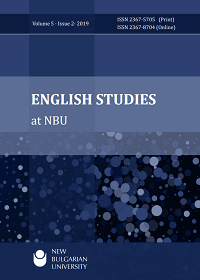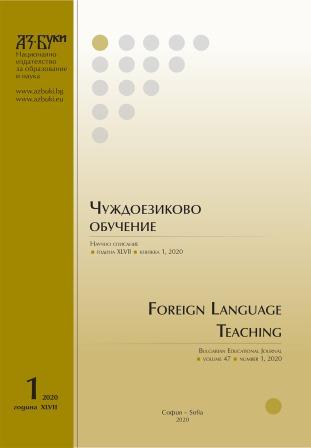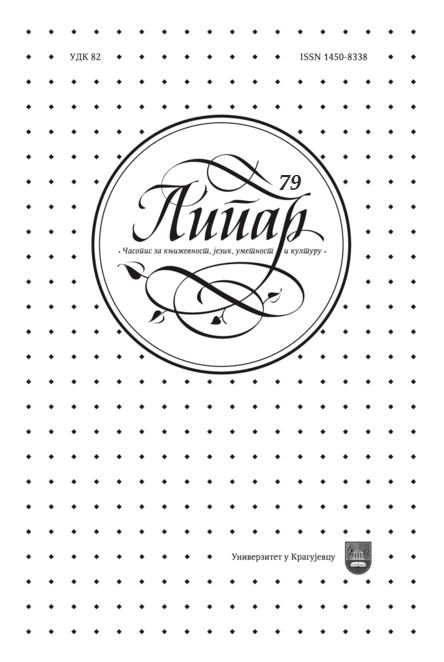
We kindly inform you that, as long as the subject affiliation of our 300.000+ articles is in progress, you might get unsufficient or no results on your third level or second level search. In this case, please broaden your search criteria.


Development of reading abilities has a fundamental role in the overall social and cognitive functioning of every person. Growing number of primary school children with specific difficulties in the mastering of reading technique has necessitated the development of a system for prevention and identification of specific reading disabilities at pre-school age.The aim of the present study is to propose a model for identification of children (between 3-5 years old) at risk of belonging to the group of specific reading disabilities. The exposition systematizes the main determinants in the process of evaluating of specific reading disabilities. In order to form a set of diagnostic signs with prognostic value, some risk factors and significant diagnostic markers, as well as their correlations with the reading processes are discussed. Data from standardization of a test battery for the assessment of risk regarding specific reading disabilities in pre-school children is presented.
More...
Studying speech acts is an interesting method in the study of language. This article adopts J. L. Austin’s understanding of speech acts and it aims to present his ideas for performatives and to introduce new notion “meta-constatives”. To accomplish this goal first we will briefly introduce analytic philosophy’s context, with which we can explicate philosophy of ordinary language, speech acts and in particular performatives. In the second part of the article meta-constatives will be presented. The later are utterances, with which we can show how things in the world must be. In the second part of the article we will also turn our attention towards imperative sentences, through which we build meta-constatives. Also, a relation between performatives and meta-constatives will be created. Finally, the article points out differences between meta-constatives and imperatives.
More...



The object of the article is a late legend – The Story of the Irani Star – which might have originated among the Eastern Orthodox Slavs in the 15th c. The plot revolves around the Star of Bethlehem, the birth of Jesus, and the pilgrimage of the Magi (cf. Matthew 2: 1–12). The article discusses the narrative, its structure and the history of the text, with a focus on the edition and reconstruction of the text. The Story is published according to the copy found in Miscellany No 143 (504), 258v–265r, dated to the 16th c., which is part of the manuscript collection of the Joseph-Volokolamsk Monastery. Today, the manuscript is kept in the Russian State Library (Moscow, Russia). The edition is prepared in comparison with four copies of the legend dated to 15th and 16th c.
More...
The report is written in connection to the language of one letter written by the Bulgarian Revival writer Ivan N. Momchilov. The article exposes important grammatical peculiarities of the language of this text. The review shows that Ivan N. Momchilov contributes to the approval of a series of grammatical norms, inherent to the contemporary Bulgarian language.
More...
This study used qualitative analyses to explore novice ESL writers’ concepts of writers, readers and texts. Metadiscourse studies tabulate frequencies of discourse markers in order to characterise the different ways novices and experts, native-speakers and non-native speakers, construct themselves as writers, engage with their readers, and guide readers through their text. But the picture created by these descriptive statistics lacks many content areas voiced by student writers, including their reliance on visual content, and their emotions. Student writers’ experiences in a world saturated by visual media and marketing views are also factors shaping how they construct their identities as writers, the identities of their projected readers, and how they understand what they are doing when writing text. This study used content and transitivity analyses to assess how Arabic native-speaker novices understand themselves as writers, how they project their readers’ identities, and how they try to engage them. Results show that visuals are indistinct from text, and verbs of seeing are used for reader understanding, in novice writers’ sense of their texts, and how they understand engaging the reader. These novices have a demographically granular assessment of audiences, but aim to please readers with expected content rather than challenge them with academic content, and they downplay important elements of teacher talk, syllabus and second-language (L2) composition instruction, particularly data, research, structure and language.
More...
A survey of twelve translation students in 2017 revealed that they tend to find translating figurative and metaphorical language difficult. In addition, an experiment also conducted in 2017 showed similar results. During the first phase of this experiment, two trained researchers coded metaphorical items in a text from the New Scientist following the Metaphor Identification Procedure Vrije Universiteit Amsterdam (MIPVU). Based on Cohen’s kappa, the researchers reached an initial coding agreement of 0.692 (strong agreement) and a final agreement score of 0.958 (almost perfect agreement) after discussion. The second phase of the experiment involved the coding of the metaphorical items previously identified by the researchers in the same text by 47 students who received a two-hour introduction to conceptual metaphor theory and a simplified method to code metaphorical items. However, the results of the students’ coding showed that they had failed to identify metaphors in 49.96% of cases. Nevertheless, a chi-squared test (p < 2.2-16) revealed that the students’ coding was not due to chance alone and therefore not arbitrary.
More...
We consider peculiarities of poetic meaning creation in the processes of intertextualization and contextualization while analysing a unique case of a polylogue between an academic scholar (A.N. Veselovsky) and poets belonging to different languages and cultures (Vyach. Ivanov, V. Teryan). Veselovsky’s article “From the poetics of a Rose” became a source for Ivanov’s poem “The Rose of Transfiguration”, then it became the basis for the sonnet of V. Teryan. We demonstrate that intertextuality is a complex and non-linear interaction between texts and meanings. The archetypal semantics of the rose and the motives of flame, blood, and also death and resurrection associated with it are contextualized in relation to the Christian holiday, personal myth-making, the tragic events of the Armenian Genocide in the Ottoman Empire. The mythopoetic semantics of the symbol synthesizes various cultures and poetic traditions, creating opportunities for multidimensional semantization and partial translatability of different “texts-echoes”. Expressing new content in different contexts, semantics is based on the same symbols; this leads to a cascade-like actualization of their potential, especially when considering texts connected by intertextual relations in their integrity - as a kind of super-text.
More...
The article is devoted to the Russian phrasemes with a colorative component as a means of forming linguo-cultural competence and developing emotional intelligence during the process of teaching Russian as a foreign language. The phraseological units as a linguistic and cultural sign always evoke strong interest among linguists and also the neophrasemes further enrich the lexico-phraseological system and conceptualize reality through emotional images. The main focus of the research includes analysis of the expressional and emotional characteristics of the phrasemes mentioned above. The article is interdisciplinary: it reveals a structural-semantic typology, as well as a system of exercises that can be involved in the teaching process when developing the listening, reading, writing and speaking on level B1-B2 in accordance with the Common European Framework of Reference for Languages.
More...
The article draws attention to the linguistic aspects of the problem of speaking in the field of gender and sexual relations. My observations show numerous examples of euphemistic names for marital status, sexual relations and intimate body parts. The presence of euphemisms in the tabloid media and their active use there refute the perception in linguistics (and in particular in stylistics) that euphemisms are a feature of a single type of socially restricted speech (i.e. that they are part of official / high registers). My observations clearly show that in the media environment in Bulgaria there is a clear tendency for the active use of euphemisms within the informal speech register. This tendency is defined as brand new, formed at the end of the 20th century and actively manifested at the beginning the 21st century in journalistic style. Dysphemistic nominations are mostly jargon words and contradictory evaluations include nominations belonging to the group of international terms – impotent, vagina, penis. The transformation of medical terminology into dysphemisms and taboo names is due to the fact that the denoted concepts are strongly prohibited. This is further transmitted to the very terms denoting them.
More...
The research tries to highlight the confluences between the constructivist paradigm of the learning process cantered on construction/ deconstruction and the reconstruction of the mental representations with the help of the cognitive components, as well as the learning model based on the ACISSI conceptual structure. The terminological delineation of the ACISSI acronym (algorithms for configuration and integration/ insertion of stratified structures of learning/ understanding) will be clarified from the perspective of the application of the concept of system of contents, through a strategic didactical architecture to the symbiosis created by the integrative vision: learning paradigm/ learning model/ valorisation of the formative attributes of the content systems, starting from the ACISSI concept and highlighting the role of motivational blocks in coherence with the principles and criteria for the application of the methodological set. At the same time, the paper will clarify the aspects related to the use of other types of texts than the colloquial/ functional, artistic and the criteria for the selection and adaptation of these texts. A key element of this research is represented by the description of the model circumscribed to the track of the comprehension competence, from the perspective of the stages of the learning units: acquisition – development of a basis of cognitive components, at the level of exploration of the knowledge resources.; Introspection – acquisition of the different aspects of knowledge; Modification – overall vision on the studied resources, and themed elaboration of a cognitive project; Presentation of the results – integration of the learning model in the community reality.
More...
The concept of “fool” in the Bulgarian and the Russian linguistic picture of the world is associated with the character of the jester, joker, the clown, the idiot, the eccentric, the moron. The numerous linguistic units with the word “fool” outline its ambivalent place in the two linguistic pictures of the world.
More...
The paper provides a linguistic analysis of political slogans. The corpus material includes political slogans of this year‘s general elections held on April 3, 2022. The aforementioned syntactic constructions are classified into two categories– slogans with a predicate constituent and slogans without a predicate constituent. Using qualitative methodology, we endeavor to provide a thorough description of excerpted linguistic units in order to determine their stylistic and pragmatic potential. The analysis concludes that the dominant feature of these linguistic expressions are stylistic figures of repetition – alliteration, assonance, and consonance – but in some instances, other marketing strategies have been implemented that contribute to the retention of statements. Nevertheless, we suggest that interviewing native speakers would provide a better insight into the pragmatic nature of the examined material.
More...
The study examines the problems of rhythm as a non-linguistic and linguistic phenomenon, as well as the similarities and differences between rhythmic organization in poetry and in speech, the number and nature of rhythmic units, the classification of languages according to their rhythmic organization, and the role of various prosodic features in the rhythmization of speech. Moreover, special attention is paid to the nature of rhythm in relation to its participation in the temporal organization of speech and to the specificity of the rhythmic systém of the Bulgarian language. For this purpose, the theoretical propositions on the physiological, perceptual and linguistic conditioning of speech rhythm in relation to speech production and speech perception are presented in detail. At the end of the article on the basis of experimental data from a number of studies that have examined the rhythmic organization of Bulgarian spoken prose (colloquial language), both literary and dialectal, a number of important conclusions are made for the Bulgarian language on the discussed issues.
More...
This article traces the use of the future particle i/j ‘shall, will’ in Bulgarian dialects spoken in the region of the Sredna Gora to Middle Northern Bulgaria, in South-Eastern Bulgaria, and in Bessarabia. The authors argue that this phenomenon is one of the characteristic features of the socalled Chijshij Bulgarian dialects in Bessarabia and that, in them, it is inherited from the dialects in the region of Sredna Gora which is the land of origin of the above-mentioned Bulgarian dialects in Bessarabia.
More...
This article discusses future tense particles in a Bulgarian dialect spoken in European Turkey (in the villages around the towns of Uzunköprü and Babaeski). The dialect is spoken by Muslim Bulgarians who left Bulgaria at the end of the 19th century or later. Most of them originate from Middle Northern Bulgaria but some of them have come to this place from Northern Greece and have mixed with the others. There is a variety of future tense particles in the dialect under consideration: ša, sa, za, ža ‘shall, will’. The authors show examples of the use of the above mentioned particles and draw conclusions about their origin in the dialect analyzed.
More...
This article is dedicated to characteristics of Bulgarian dialectal speech used by minority groups in Bulgaria. In their speech, the author finds dialectal elements that are now rarely used by Bulgarian native speakers.
More...